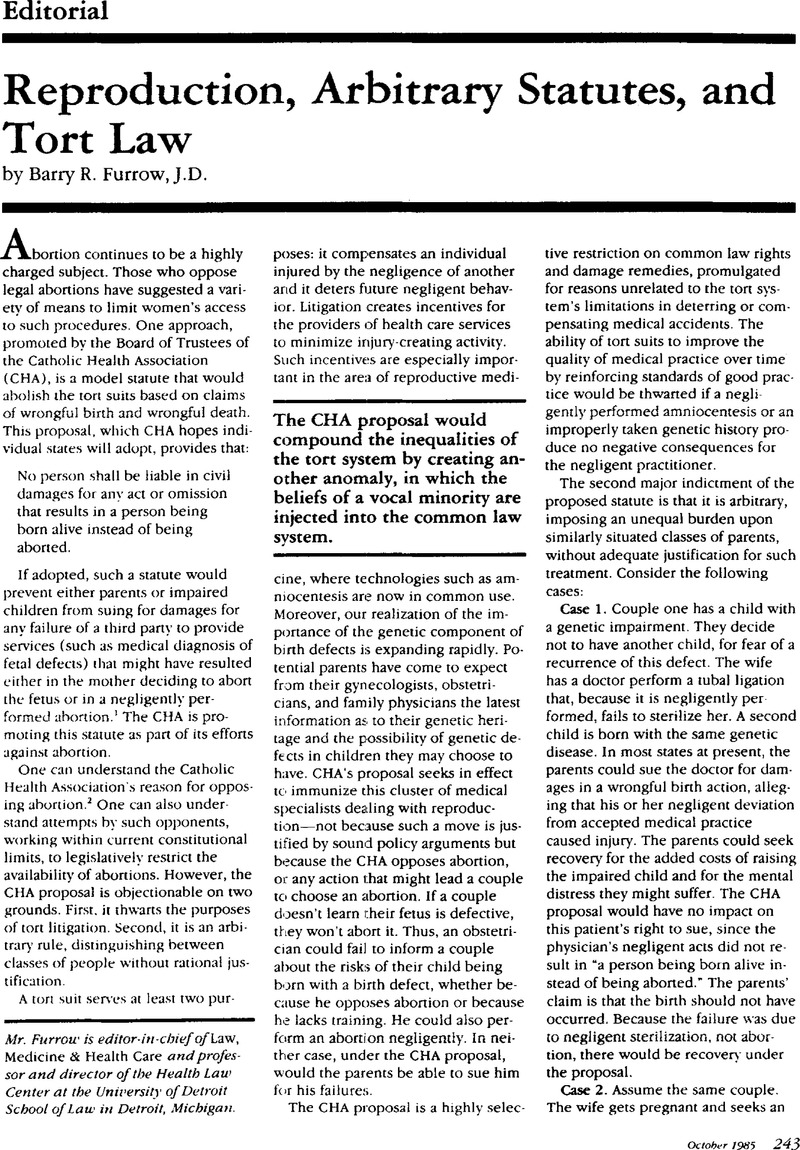No CrossRef data available.
Article contents
Reproduction, Arbitrary Statutes, and Tort Law
Published online by Cambridge University Press: 28 April 2021
Abstract
An abstract is not available for this content so a preview has been provided. As you have access to this content, a full PDF is available via the ‘Save PDF’ action button.

- Type
- Editorial
- Information
- Copyright
- Copyright © American Society of Law, Medicine and Ethics 1985
References
The CHA has also drafted a second statutory proposal aimed at abolishing actions by a child against doctors, medical facilities, or parents for allowing that child to be conceived: “There shall be no award of damages based on a claim of a person that he or she should not have been conceived.” This is considered a secondary proposal by CHA, and I will not discuss it here. See Catholic Health Association, The ‘Wrongful Life/Wrongful Birth’ Conundrum: Two Statutory Proposals of the Catholic Health Association of the United States (April 1984).Google Scholar
The Catholic community is not united on legislative attempts to restrict the availability of abortions. See Statement, A Diversity of Opinions Regarding Abortion Exists among Committed Catholics, N.Y. Times, Oct. 7, 1984, at E7.Google Scholar
This is not an impossible situation. For a case where a similar failure occurred, see Speck v. Finegold, 408 A.2d 496 (Pa. 1979) (defective infant has no course of action, but parents may sue in their own right for pecuniary expenses of caring for and treating diseased child). Proposal B of the CHA would, if enacted, prevent a child from suing on its own behalf but would not prevent the parents from suing for their own damages.Google Scholar
See Pearson, , Liability to Bystanders for Negligently Inflicted Emotional Harm—A Comment on the Nature of Arbitrary Rules, University of Florida Law Review 34:477 (1982). For a constitutional attack sustained on such grounds, see Brown v. Merlo, 506 P. 2d 212 (Cal. 1973).Google Scholar
Hern, W., Abortion Practice (Lippincott, Philadelphia, 1984) (describing data and procedures to make abortions safe and effective).Google Scholar
See Milunsky, and Reilly, , The ‘New’ Genetics: Emerging Medicolegal issues in the Prenatal Diagnosis of Hereditary Disorders, American Journal of Law & Medicine 1:71 (1975) (proper genetic information may offer assurance to parents, enabling them selectively to have unaffected offspring). The medical emphasis is “not on removal of defective fetuses, but on provision of life for those who otherwise may never have been born” (id).Google ScholarPubMed




